The 2022 "Taiwan NOW" Cultural Exchange Programme
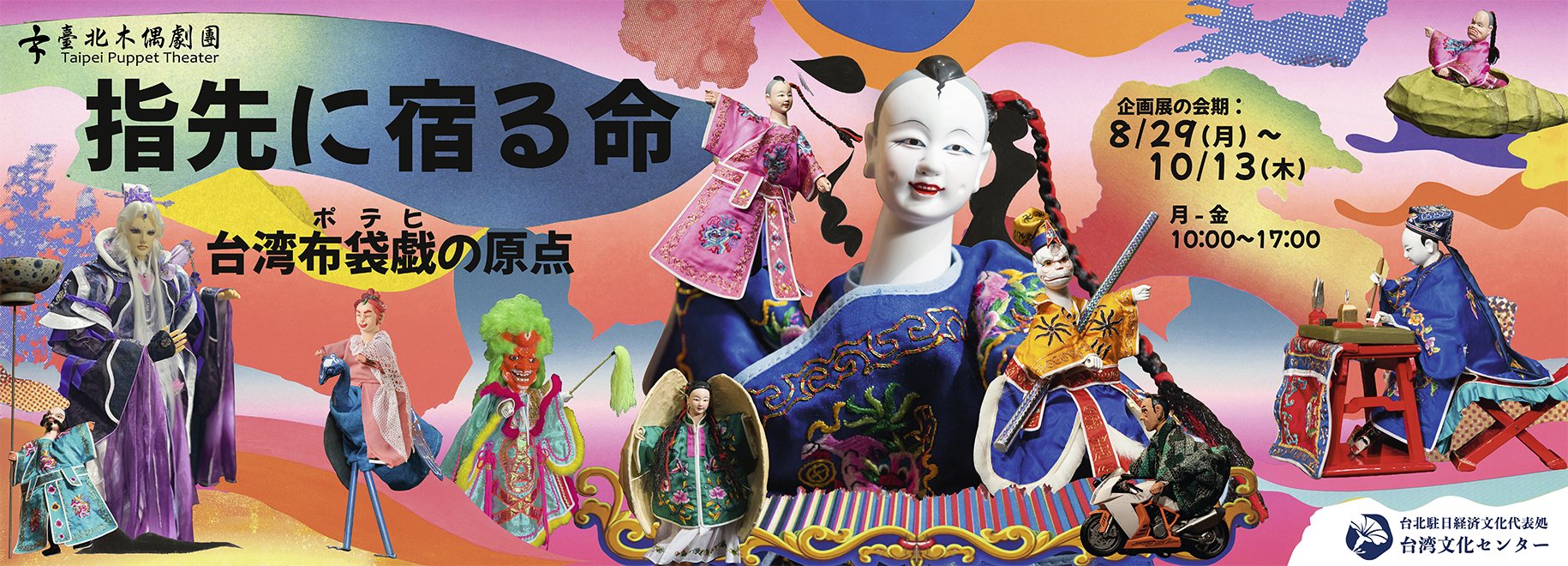
During this tour, there was Splitting the Mountain (劈山救母) performed at Za-Koenji Public Theatre on 3 to 4 Sep., and Havoc in Crystal Palace (大鬧水晶宮) at the Yokohama Doll Museum. The puppets in Havoc in Crystal Palace were exhibited at the Yokohama Doll Museum from 20 to 31 Aug. Also, a special exhibition, "The Liveliness on Fingertips - Exhibition on the Origin of Taiwanese Glove Puppetry", was held at the Taipei Economic and Cultural Representative Office in Japan from 29 Aug. to 13 Oct. The design and production of both exhibitions were completed in Taiwan, with the assistance of a Japanese exhibition set-up company to complete our on-site set-ups.
Ambassador Hsieh Chang-Ting arrived on the afternoon of 31 Aug. and was given a tour by our lovely lead puppeteer. Through the exhibition's approachable explanations, Japanese audiences could learn more about the origins of traditional Taiwanese puppetry and then enjoy our performance. The charm of Taiwanese puppetry was fully brought out.
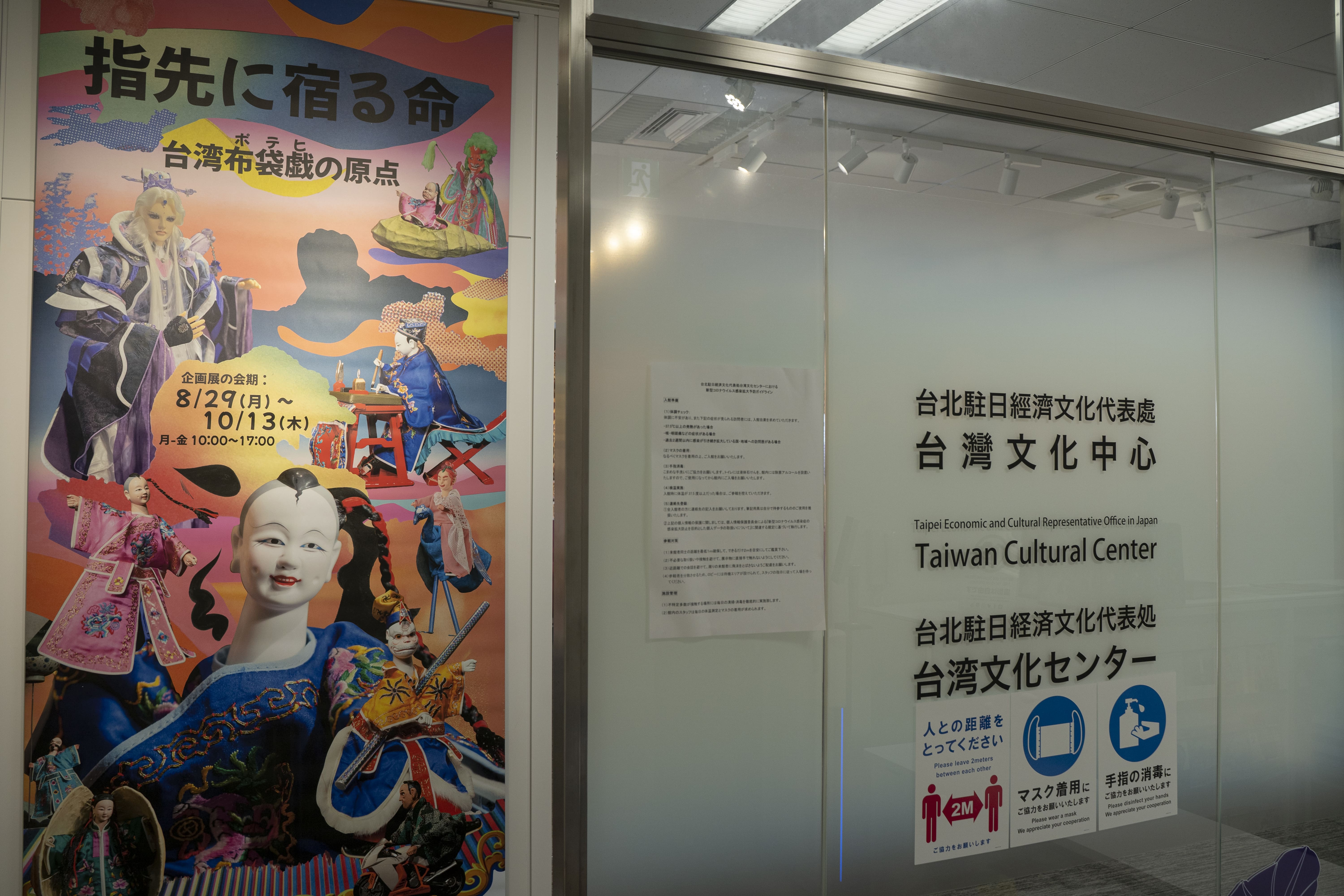


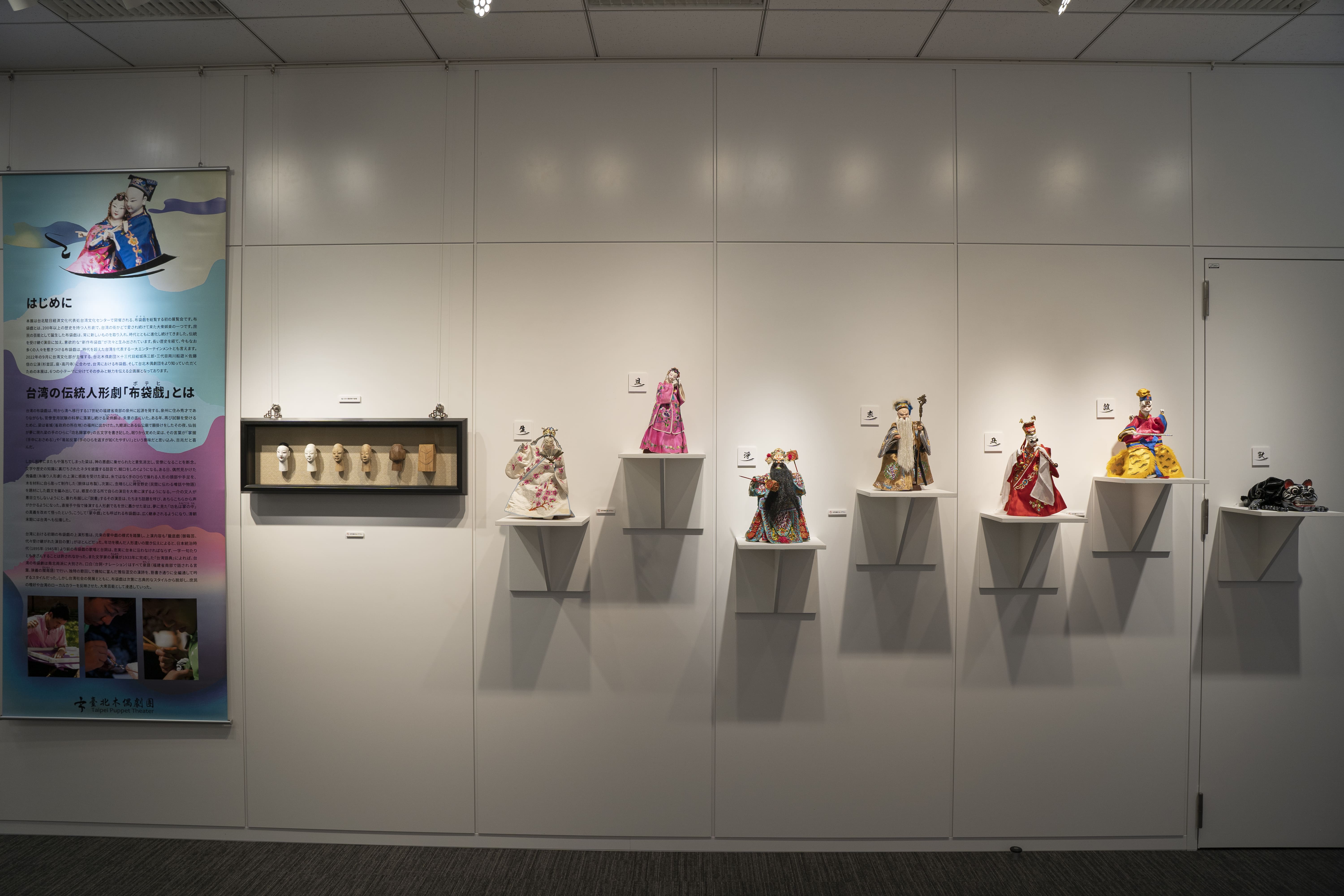
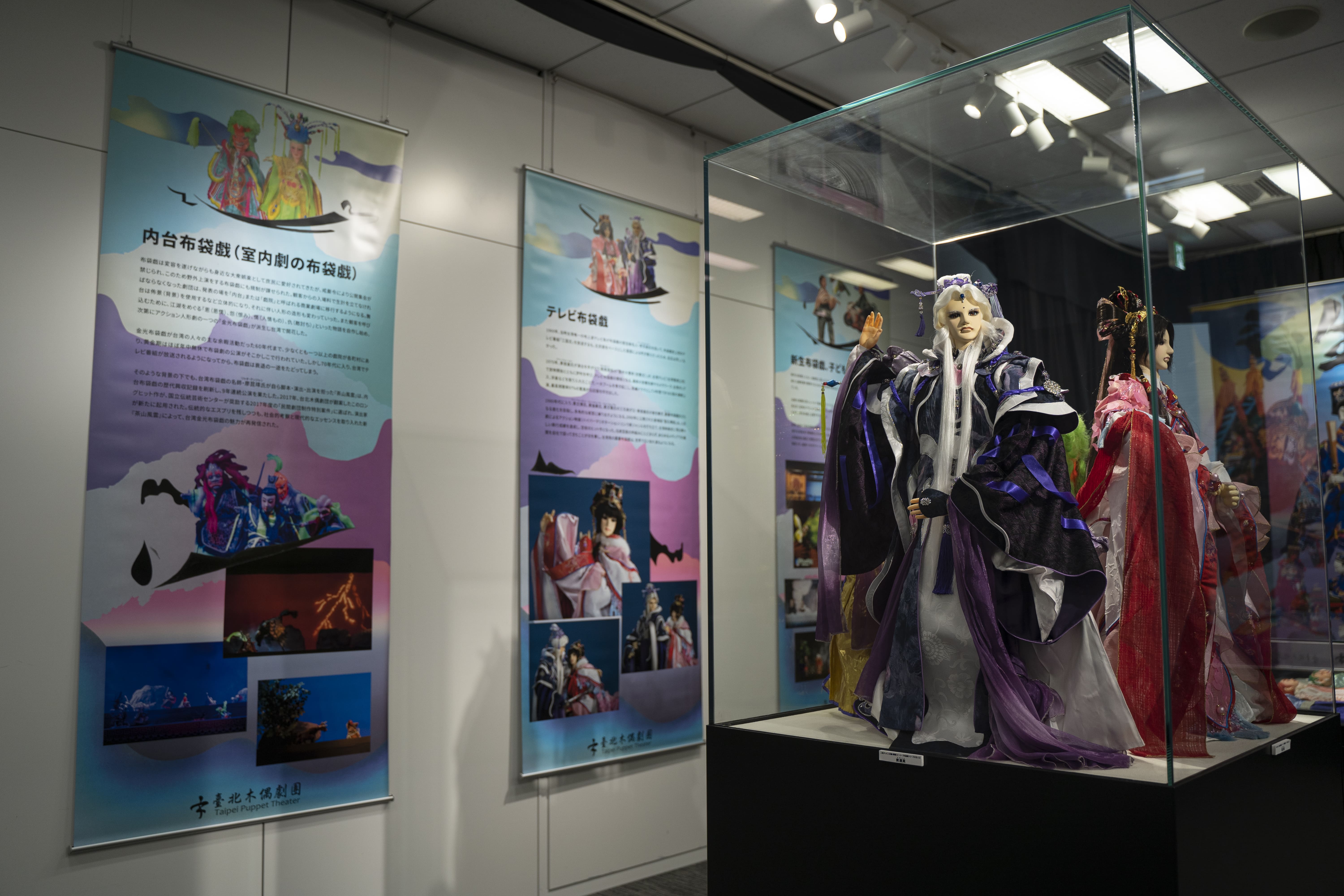
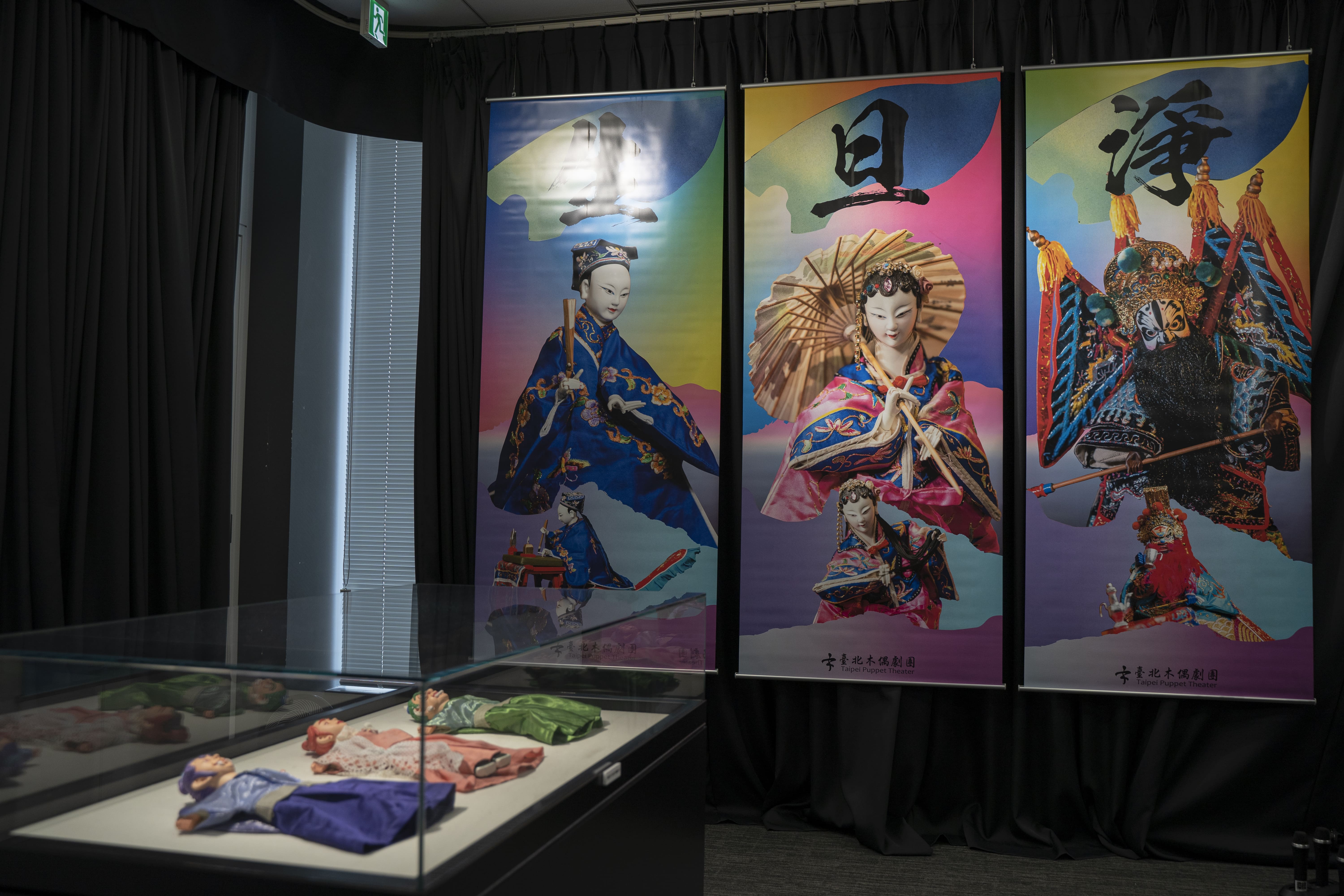
Introduction
This is the first time an exhibition of traditional puppetry has been held at the Taiwan Cultural Centre in Japan. Traditional Taiwanese puppetry has a history of over 200 years and is one of the most famous traditional performances in Taiwan. With the changing of the times, Taiwanese puppetry has evolved with the times to incorporate new things. In addition to the conventional performing forms, a variety of commercialised and popular performances also appeared. Traditional Taiwanese puppetry has only become more vibrant and dynamic throughout the decades. It is one of the most representative traditional Taiwanese performing arts that still attracts people's attention. In September 2022, through an exchange programme organised by the Ministry of Culture of Taiwan, the Taipei Puppet Theater collaborated with the thirteenth generation of Youkiza (結城座), Mr Yuuki Magosaburo (結城孫三郎), second named Ryougawasenyuu (三代目両川船遊), to perform the glove puppet show directed by Director Satou Makoto (佐藤信): Splitting the Mountain (劈山救母), at the Za-Koenji Public Theatre (座・高円寺). In order to systematically introduce the history, culture and characteristics of Taiwanese puppetry to the Japanese audience, the exhibition is divided into six thematic sections and a hands-on experience area. It is hoped that through the re-creation of the traditional puppet performance scenes, the unique and original aesthetics of Taiwan's puppet theatre can be restored, and the complete history, culture and characteristics of Taiwanese puppetry will be systematically presented to the Japanese public.

What is Traditional Taiwanese Puppetry?
It is said that the origin of traditional Taiwanese puppetry, Pu-Tai-Hsi / pòo-tē-hì (布袋戲), lies in the late Ming and early Ching dynasties in Chuanchou, China. Around the 17th century, a scholar in Chuanchou called Liang Ping-Lin was discouraged by his repeated failure to pass the imperial exams. When he went to the provincial capital Fuchou to sit for the examinations again one year, he asked for divination at the Temple of the Nine Immortals. That night he dreamt that the immortal was holding his hand and inscribed with the words "Fame and fortune are in your palms". When he woke up, he thought the immortal meant "mastery" and "as easy as turning one's palm". Unexpectedly, he failed again. The scholar believed that the immortal was playing tricks on him, so he gave up his career and used his knowledge of literature and history as material to make a living as a storyteller to the people in villages. When he happened to see a performance using a puppet with strings, he was impressed. He carved his own puppet and operated it with his palms instead of strings. Liang Ping-Lin made up plots based on folk tales and stories and performed them among the villagers to express his feelings. The scholar was inevitably shy about doing this, so he did the storytelling performances through a curtain. His performance caused a sensation and became famous everywhere. Only then did Liang realise what the immortal had shown him: "fame and fortune are in your palms". And this is how the traditional Taiwanese puppetry came to be passed on.
In the early days, the performance form of Taiwanese puppetry was primarily based on the original mode of Chinese puppetry. The contents were what the old artists called "Basket-Bottom Plays (籠底戲)", the old plots passed down from predecessors. According to the recollections of senior artists, before the Japanese era, they did not dare to add or subtract a single word from the scripts. Every singing, reading, acting, and martial arts performance had to be done according to the ancient scripts. In the Dictionary of the Taiwanese Language (台灣語典), 1933, Lien Heng mentioned: "There is a distinction between Pei-Kuan and Nan-Kuan puppet troupes. The dialogues are all in the language of Chuanchou and are humorous and entertaining. There are also poems in the dialogues, which are intriguing. It is often performed in its entirety. People of all levels of education can appreciate it." But for the general audience, theatre is a popular and common entertainment. It would be boring to be overly conservative. With the prosperity of Taiwanese society and the people's changing tastes, more and more artworks with strong local characteristics have been gradually created in Taiwanese puppetry.
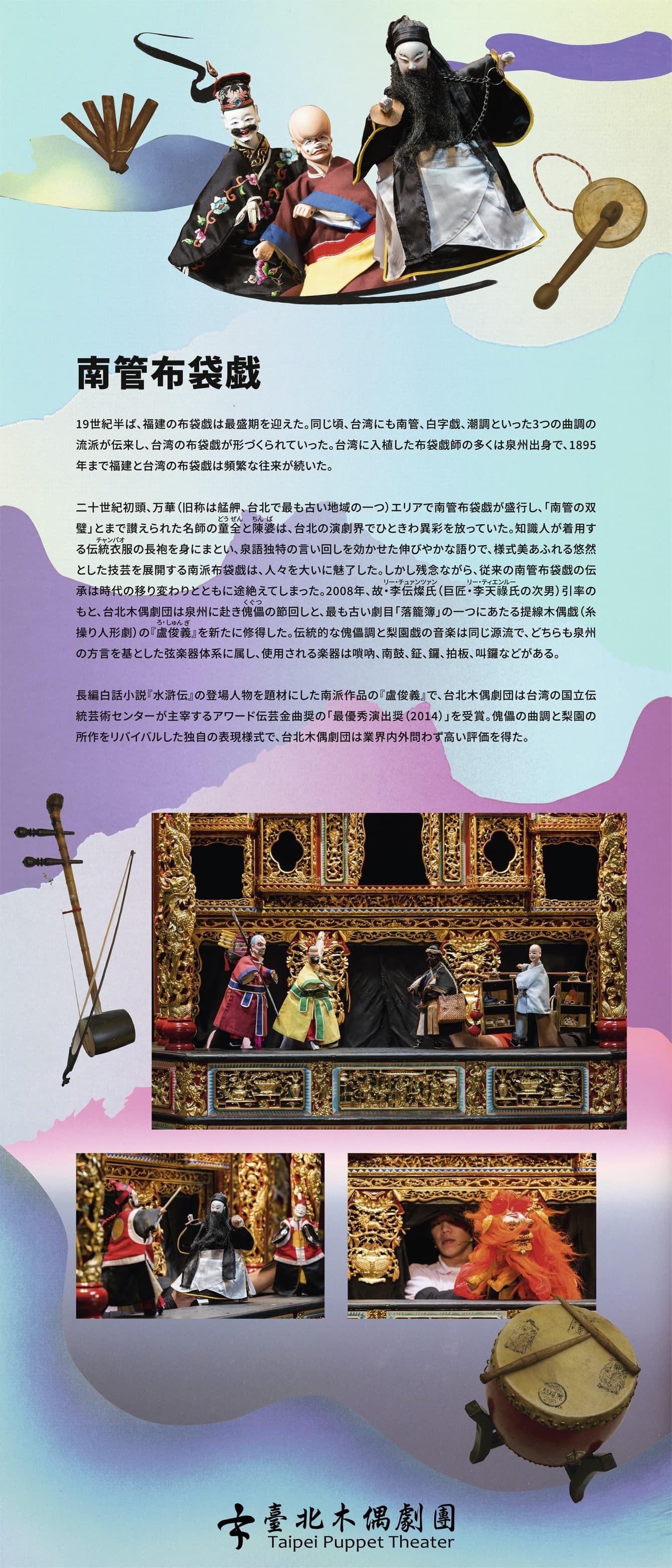
The Nan-Kuan (南管) Puppetry
There are three genres of traditional Taiwanese puppetry that have been introduced from China: Nan-Kuan (南管), Pai-Tzu Opera (白字戲), and Chao Tune (潮調). The mid-nineteenth century was the peak of the development of puppet techniques in Fuchien and the beginning of the formation and development of Taiwanese puppetry. As late as 1895, there were still exchanges between Chinese and Taiwanese puppetry artists. Among them, the "Chuanchou masters" came to Taiwan mostly. In the early twentieth century, there were many famous masters in the Taipei theatre industry. The Mengchia area became a stronghold of Nan-Kuan puppetry. The traditional puppetry masters, Tung Chuan (童全, nicknamed Bearded Chuan) and Chen Po (陳婆, nicknamed Cat Po), were known as the "two great treasures of Nan-Kuan". Nan-Kuan performers emphasised classy style and delicate acting skills. They usually wore long robes to perform. The performers used beautiful words gracefully, and the operas were all in the Chuan language.
In 2008, members of the Taipei Puppet Theater went to Chuanchou, China, under the guidance of the late Taiwanese puppet master, Mr Li Chuan-Tsan (李傳燦, second son of Master Li Tien-Lu), to learn the art of Nan-Kuan puppetry, which has now been lost. They learnt the Chuanchou puppetry music (魁儡調) and the Chuanchou marionette play, Lu Chun-I (盧俊義). The play is one of the "In-Cage Script (落籠簿)" plays , which contain the oldest of the traditional plays. The traditional Chuanchou puppetry music has the same origin as Li-Yuan opera (梨園戲) music. They both belong to the Chuanchou Nan-Kuan system, which uses the Chuanchou dialect as the primary language. The instruments used are ài-á (噯仔, suona horn), Nan drum (南鼓), Cheng gong (鉦鑼), Pai (拍, wooden boards), Erh Hsien (二絃, two-stringed instrument), San Hsien (三絃, three-stringed instrument), Chiao gong (叫鑼, small gong used with small wooden block), etc.
Taipei Puppet Theater recreated Nan-Kuan puppetry with the play Lu Chun-I (盧俊義), from Outlaws of the Marsh, which has a strong sense of heritage. The troupe has also demonstrated the unique concept of "singing Chuanchou puppetry music, performing Li-Yuan Opera". In 2014, the play was awarded the Best Group Performance of The Golden Melody Awards for Traditional Arts and Music.
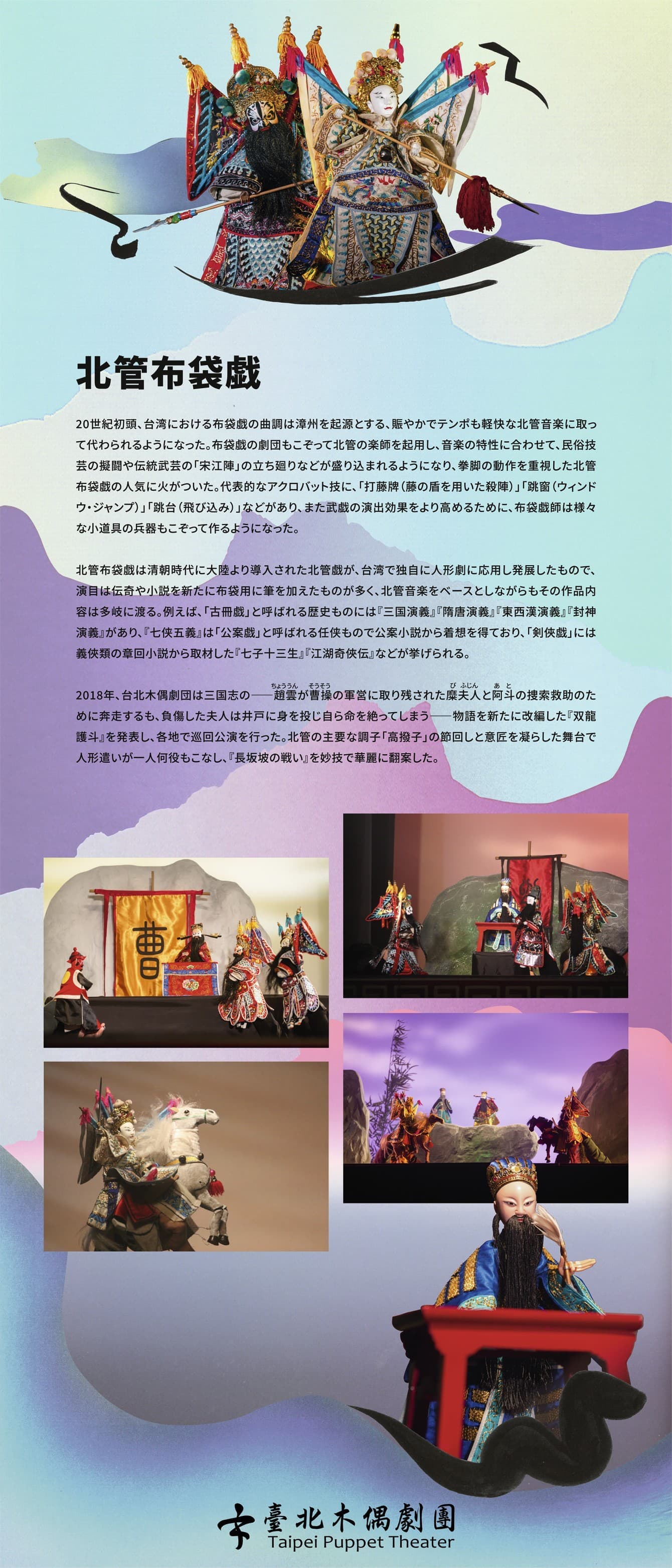
The Pei-Kuan (北管) Puppetry
In the early twentieth century, the music of traditional Taiwanese puppetry was gradually replaced by Pei-Kuan music. Pei-Kuan is a type of popular traditional music in Taiwan. The people love its characteristics: high, lively, fast, and rhythmic. Many troupes began to employ a large number of Pei-Kuan musicians as their backstage performers. In order to match the characteristics of the music, performers began to include martial arts scenes in the plays. They took references from the martial arts movements of human shows and the Taiwanese folk Sung Chiang troupe and incorporated them into puppet performances. For example, the Rattan-Shield Formation (打藤牌), window jumping (跳窗), stage posing (跳台), and so on. To make the shows even better, performers made a variety of weapons to use in the show.
The performances of Pei-Kuan puppet shows are not only presented with a selection of plays taken from the Pei-Kuan operas that are more suitable for the puppetry but also with Pei-Kuan music combined with stories taken from novels. The plays based on novels include several types. Those about judges handling cases, such as the "seven heroes and five gallants (七俠五義)", are called the "public cases plots". Those based on history, emperors, and generals establishing dynasties, such as "Romance of the Three Kingdoms (三國演義)", "Romance of Sui and Tang Dynasties (隋唐演義)", "Romance of the Eastern and Western Han Dynasties (東西漢演義)", and "The Investiture of the Gods (封神演義)", are called the "history plays". Some plays are based on chaptered novels about swordsmen and chivalry, such as Seven Swordsmen and Thirteen Heroes (七子十三生) and Legend of Extraordinary Swordsmen (江湖奇俠傳), these plays are called the "swordsmen plays".
The Taipei Puppet Theater's 2018 production, Guarding A-Tou (雙龍護斗), was adapted from the Pei-Kuan plot Changpanpo (長坂坡). The Kao-Po-Tzu Tune (高撥子腔) in Pei-Kuan music was used. The play was staged in a scenic style to present the scene that Chao Yun desperately charged seven times through the ranks of the enemy. The arrangement of the table and chair also subtly presented the scene when Lady Mi threw herself down a well. Not only do the puppeteers have to express their martial arts skills with their palms, but they also have to portray the characters of multiple roles.
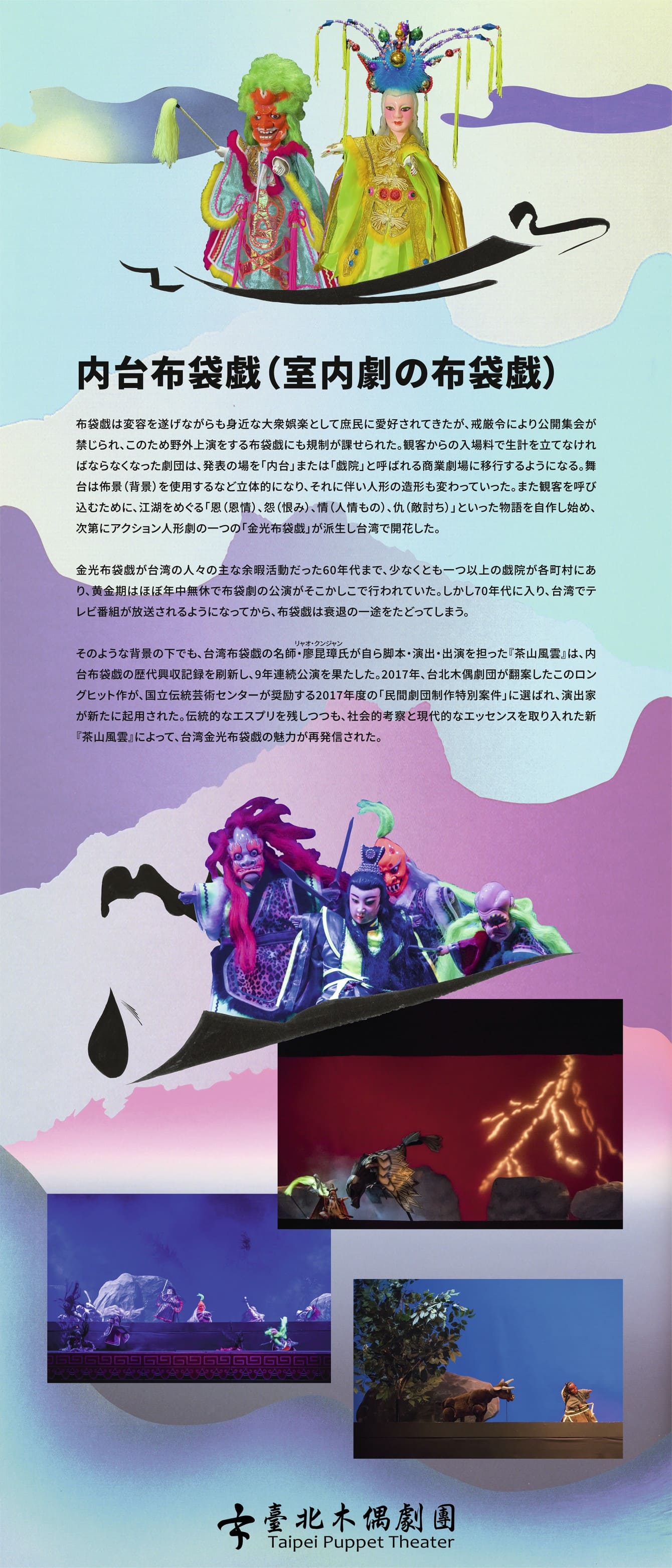
The Indoor (內台) Puppetry
With the boom in Taiwanese puppetry, many theatres switched to selling tickets, only in the off-season, to make a living. After entering the "Indoor-Commercial Period", in order to attract more audiences, the theatres began to enlarge the stage, change the stage format, add three-dimensional scenery, change puppet modelling, and so on. In addition, troupes also began to write their own plots. The main themes of plays are mostly the confrontation between the rival factions of the kung-fu world, featuring "enmity, grudge, love and vengeance". The "Golden Light (金光布袋戲) Period " of modern Taiwanese puppetry has arrived.
Before the 1960s, Golden Light Puppetry was one of Taiwan's most popular recreational activities. There was at least one theatre in every town in the country where it was performed almost all year round. It was not until the 1960s, when television programmes began to be broadcast in Taiwan, that the popularity of Taiwanese puppetry gradually waned.
Legend of Chashan (茶山風雲) was the first production written, directed and performed by Taiwanese puppeteer Liao Kun-Chang (廖昆章). The show had been performed for nine years and made a big hit, setting a record for the number of tickets sold in Taiwan's Indoor Period of puppetry. In 2017, the Taipei Puppet Theater used this play as the production in a project, held by National Center for Traditional Arts, called the "Supporting Folk Theatre Groups on the Production of Classic Plays". We hired a modern director to reinterpret the plot, preserving the essence of the old "core of the plot", which is the essence, giving it a new social and cultural reflection and modern concept, and reviving the new charm of Taiwan's Golden Light Puppetry.
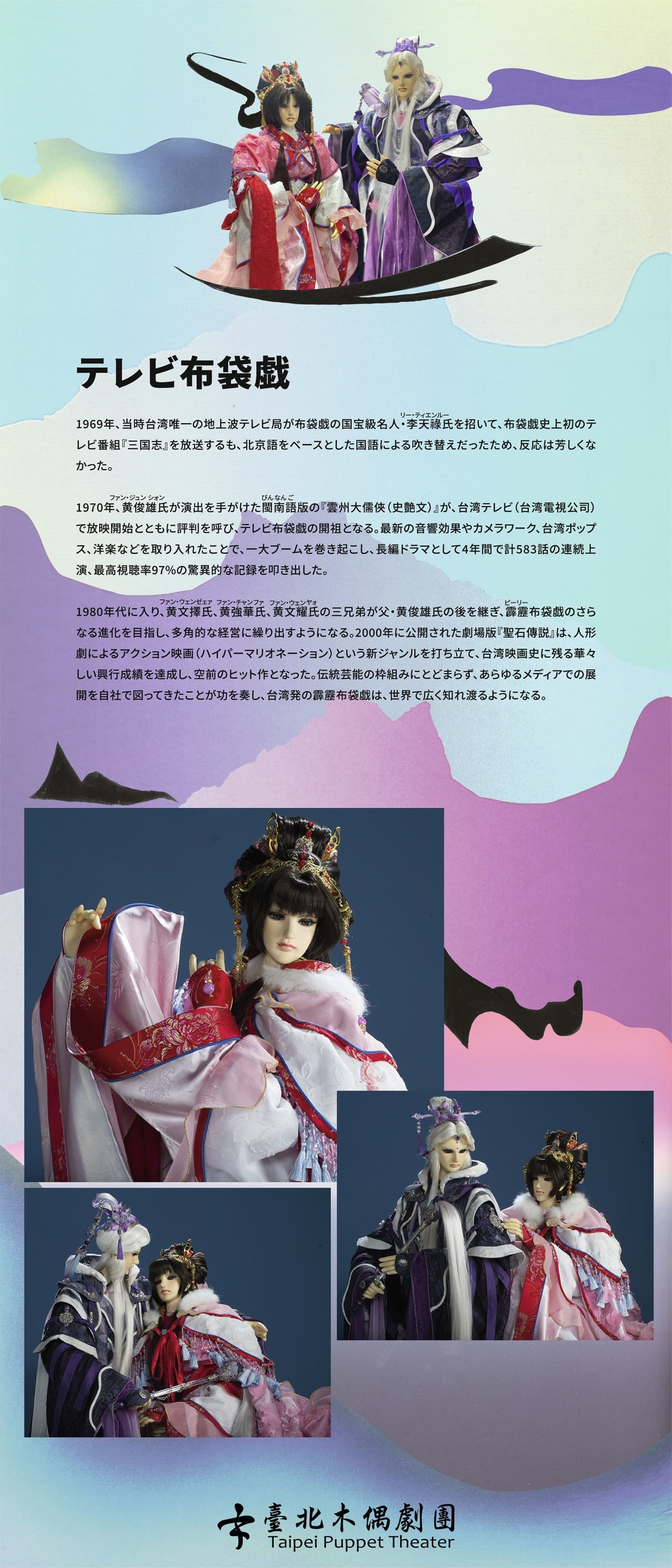
Puppetry on TV
In 1969, Taiwan's only broadcast television channel invited the famous puppet master, Li Tien-Lu (李天祿), to perform Three Kingdoms (三國志) on TV. This was also the first time a Taiwanese puppet show was presented on the small screen, but it was not very effective because it was dubbed in Chinese at the time.
In 1970, Huang Chun-Hsiung (黃俊雄) dubbed The Scholar Swordsman (雲州大儒俠) in Taiwanese on Taiwan Television channel, creating a sensation in Taiwan. He used the latest sound effects, cinematography and Chinese and Western pop songs, resulting in a series of 583 episodes in four years with a high rating of 97%.
In the mid-1980s, Huang Wen-Tse (黃文擇), Huang Chiang-Hua (黃強華), and Huang Wen-Yao (黃文耀) took over from their father, Huang Chun-Hsiung (黃俊雄), and started the Pili Puppetry Series (霹靂布袋戲). They entered the big screen in 1997 with The Legend of The Sacred Stone (聖石傳說) and gradually gained a foothold. The Pili group are committed to originality, accumulating intangible intellectual property, and creating business opportunities. They also adhere to the four creative principles, transforming traditional arts into the world's leading "puppet animation" creations. Pili is a one-stop production group with cross-disciplinary digital transformations and a full range of businesses. It has created a kingdom of "Pili Puppetry" that is different from the traditional puppetry in Taiwan.
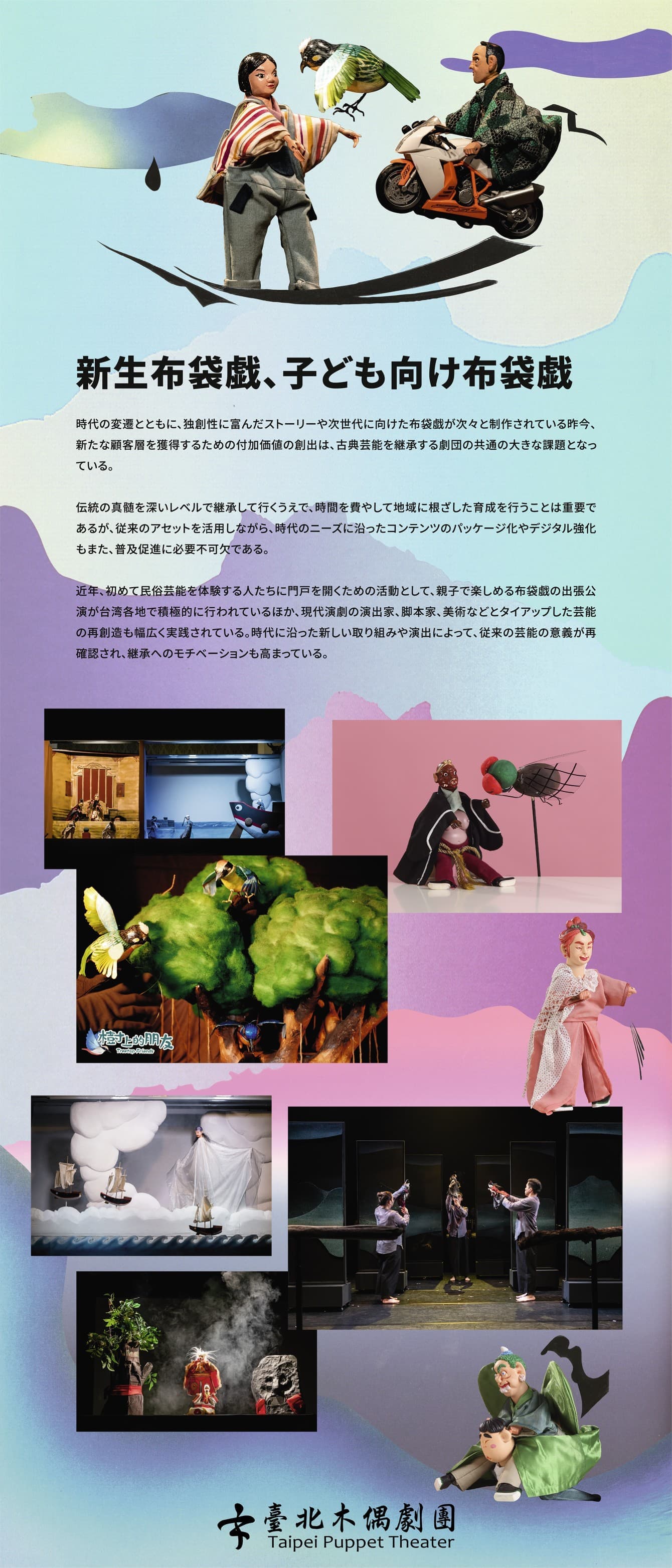
Newly-Adapted Puppet Shows and Children's Puppet Shows
As times have changed, many new plays and plays for children have been created in response. The question of how to attract a broader audience to centuries-old classic plays or traditional techniques has become a new topic for traditional theatres and traditional artists nowadays.
When facing the concept of "old plays with new productions", how can we develop new ideas within the parameters of old, classic frames? In a contemporary environment full of electronic products, how can people be willing to quietly experience and appreciate this "quiet" traditional art? Apart from the need for different forms of packaging and marketing, it also requires a long period of cultivation. Therefore, it is all the more necessary for traditional arts to take root.
The Taipei Puppet Theater has designed shows specifically for children and their families. The performances are educational and entertaining, passing on our culture.
The troupe has invited modern theatre directors, scriptwriters and art designers to join the production of our new plays. In addition to re-producing old plays, the troupe is also looking for more traditional material to reorganise and create new classic plays for the new era.
